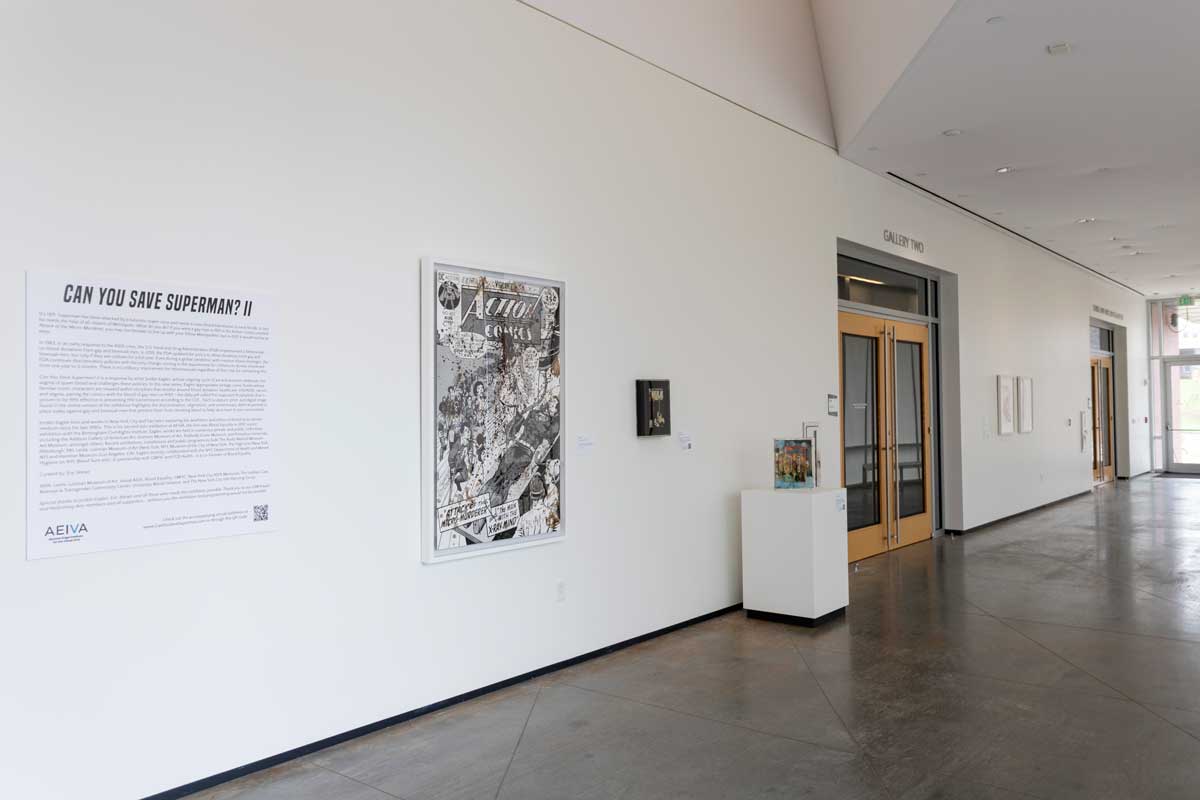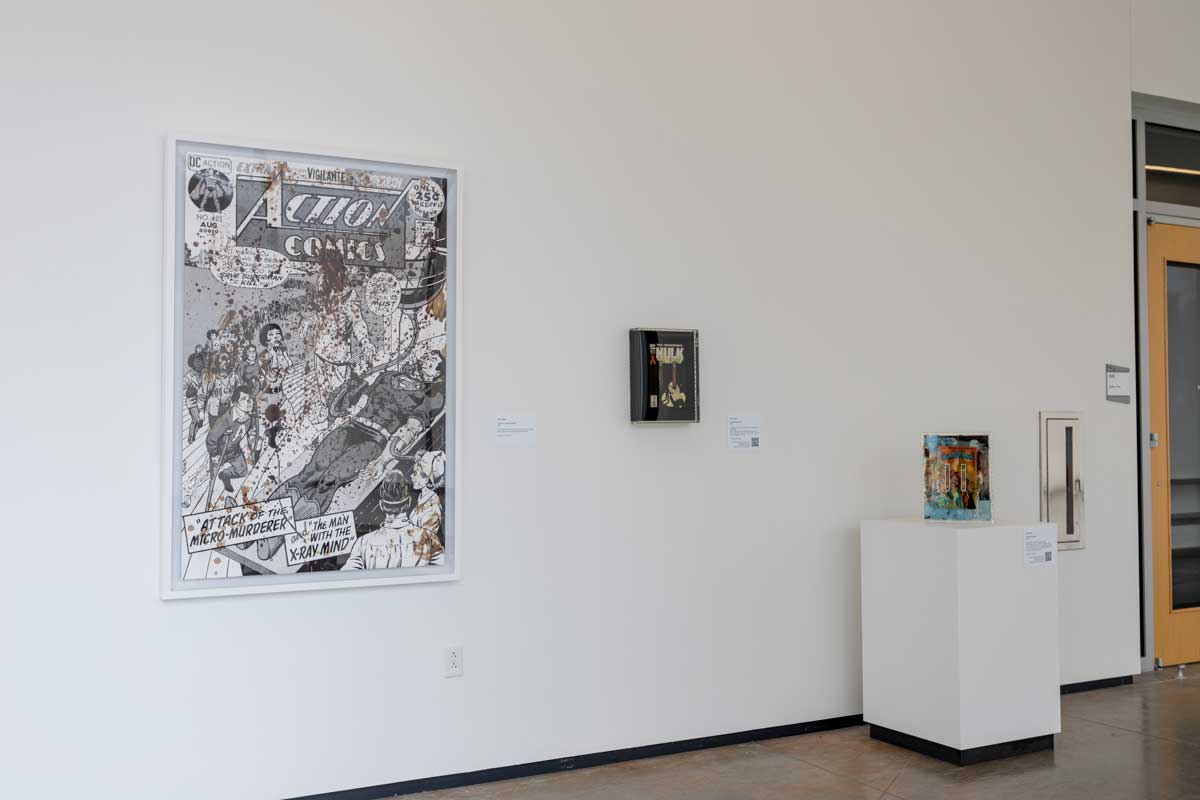CAN YOU SAVE SUPERMAN? II
January 18 - June 14, 2021
Works by Jordan Eagles
Curated by Eric Shiner
With:
Leslie-Lohman Museum of Art, Visual AIDS, Blood Equality, GMHC, New York City AIDS Memorial, The Lesbian, Gay, Bisexual & Transgender Community Center, University Blood Initiative, and The New York City HIV Planning Group
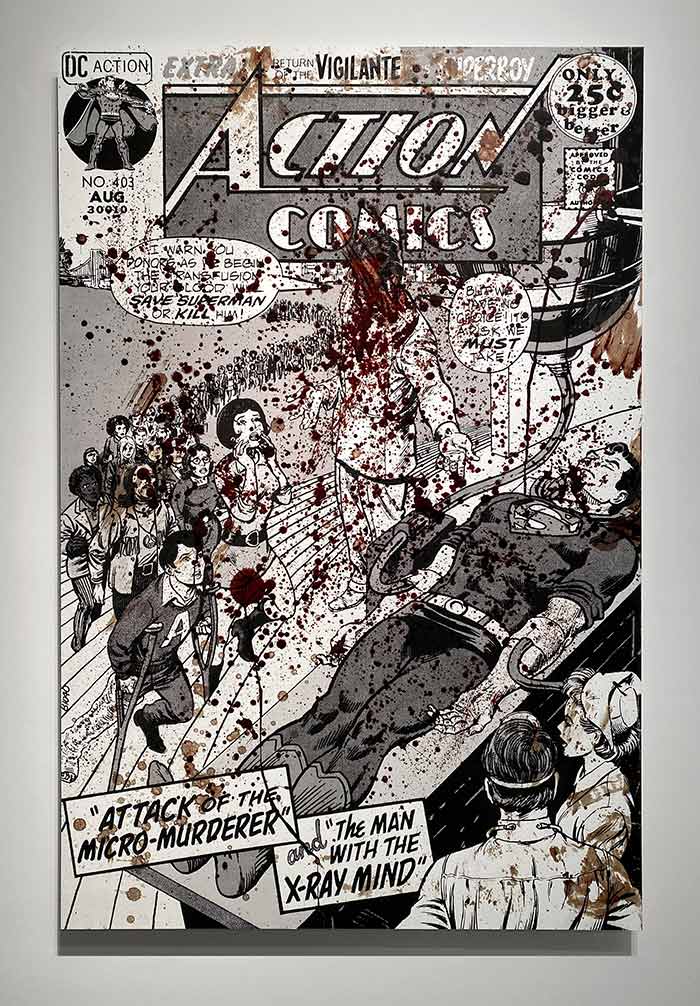 Jordan Eagles, "American Carnage 6/14 - II," 2018, 55 by 36 inches, Blood of gay man on PrEP, digital print. Courtesy of the artist.
Jordan Eagles, "American Carnage 6/14 - II," 2018, 55 by 36 inches, Blood of gay man on PrEP, digital print. Courtesy of the artist.LGBTQ+ rights, health policies, body autonomy, and saving lives are all on the line. The implications at this moment in time are severe. Even during a global pandemic, and with massive blood shortages – the FDA continues discriminatory policies* for donating blood and plasma based on sexual orientation. Can You Save Superman? II is a dynamic, responsive exhibition by artist Jordan Eagles (b. 1977), whose ongoing cycle of art and activism addresses the stigma of queer blood and challenges these policies.
Can You Save Superman? II, guest curated by Andy Warhol scholar Eric Shiner, travels from the Leslie-Lohman Museum of Art, in NYC in a new iteration. This exhibition – on view through World Blood Donor Day (June 14, 2021) takes a hybrid form, displaying works physically in the gallery and simultaneously online in a virtual exhibition.
For this new series – Eagles appropriates vintage comic books whose iconic characters are situated within storylines that revolve around blood donation, healthcare, HIV/AIDS, racism and stigma. Eagles pairs the comics with blood donated from members of the LGBTQ+ community to reframe the narratives, providing new ways of addressing the current crises.
The exhibition is anchored by a 1971 Action Comics entitled Attack of the Micro-Murderer in which Superman is infected by a futuristic super-virus. In an attempt to save his life, Superman calls on the citizens of Metropolis to donate their blood for a mass blood transfusion. Superman is depicted lying lifeless on a gurney with tubes in his arms and an infinite line of people willing to share their blood. The image is resonant of media depictions in the aftermaths of horrific tragedies, when communities come together – and heal – through selfless acts of blood donation. The comic cover is enlarged, manipulated, and converted to grayscale, with donated blood of a gay man on PrEP† splashed onto the image. The result presents a stark contrast - in 1971 a gay man could help save Superman, but in 2021, despite advances in science, treatment, and HIV prevention, he cannot. Discriminatory and unnecessary deferral periods in place today against gay and bisexual men prevent them from donating blood and helping to save lives in our communities.
The series also features sculptural works, pairing original vintage comic books, that have been laser-cut to accommodate medical tubes used for collecting the blood of an HIV+ undetectable long-term survivor and an individual on PrEP. In The Incredible Hulk, In The Shadow of AIDS (1994), the Hulk’s friend, Jim – an African-American man dying of AIDS – wants the Hulk to transfuse his radioactive blood so it can save him. Hulk won’t do it and his friend dies in the end. In The New Guardians (1988), a villain named Hemogoblin is introduced. Hemogoblin is a genetically engineered vampire with AIDS, created by white supremacists, to attack, infect and kill minorities with AIDS. Eagles’ resulting artworks highlight how fear of transmission and HIV/AIDS stigma can be equated to immanent death even though science has evolved over the decades, as we still continue to fight the epidemic.
The virtual component of the exhibition, viewable at www.CanYouSaveSuperman.com, includes striking details, full-color photography, the preserved original comic book, and a haunting, first person essay by Eric Shiner on Superman, the Black Power movement, the AIDS crisis, Blood Equality, and COVID-19, contextualizing and activating the viewing experience. Can we save our country through equality and caring for each other? Can we save Superman?
This is Jordan Eagles second solo exhibition with AEIVA. His first was Blood Equality in 2017.
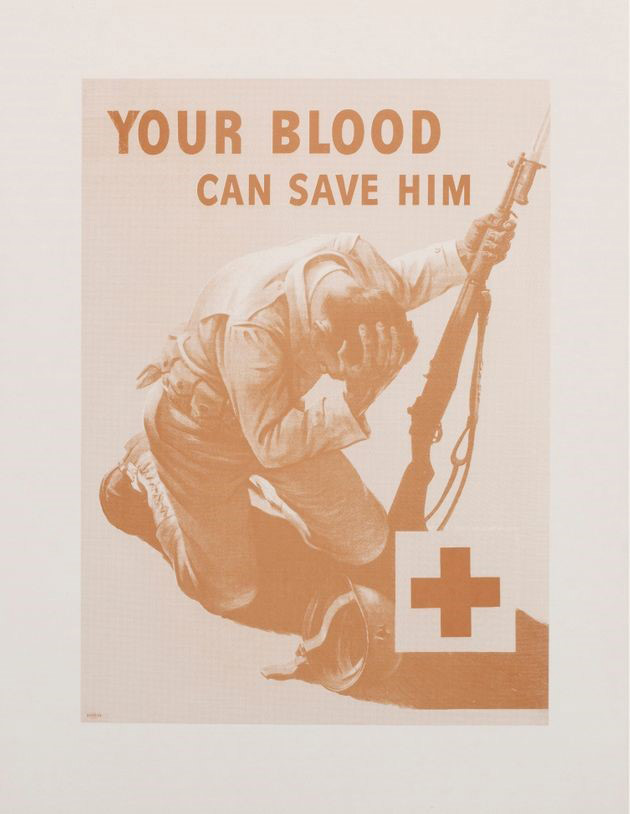 Jordan Eagles, "Our Blood Can Save Them," 2018, Screen-printed blood of a transgender, pansexual, active U.S. Service Member on paper edition: 1/14. Gift of Paul Barrett in honor of John Fields, Senior Director of AEIVA. Collection of the Abroms-Engel Institute for the Visual Arts, UAB.
Jordan Eagles, "Our Blood Can Save Them," 2018, Screen-printed blood of a transgender, pansexual, active U.S. Service Member on paper edition: 1/14. Gift of Paul Barrett in honor of John Fields, Senior Director of AEIVA. Collection of the Abroms-Engel Institute for the Visual Arts, UAB.
Learn More
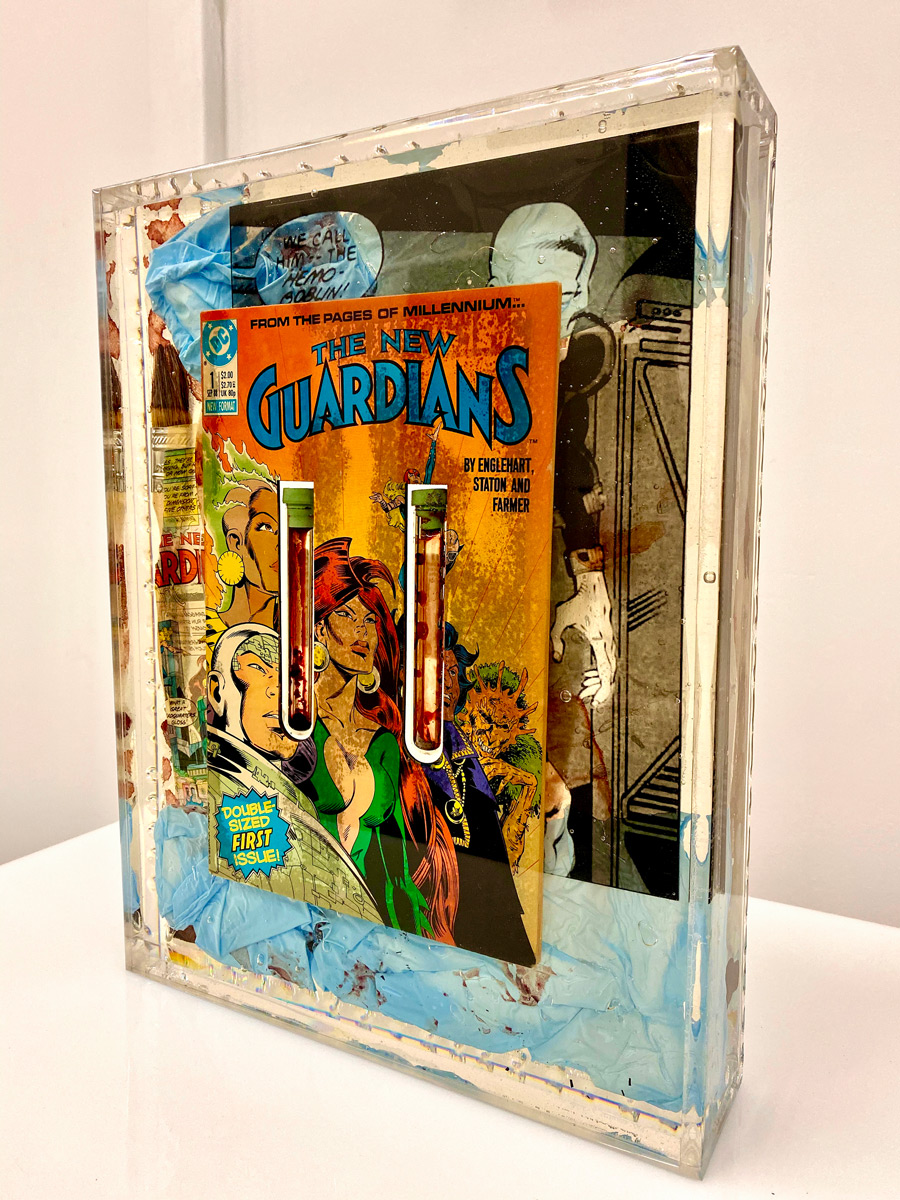 Jordan Eagles, "Untitled (Hemogoblin)," 2018, Original Comic: The New Guardians (1988)Blood collection tubes, residual blood of gay man on PrEP, residual blood of an HIV+ undetectable long-term survivor, used medical gloves, paintbrush, digital print on acetate, plexiglass, UV resin. Courtesy of the artist
Jordan Eagles, "Untitled (Hemogoblin)," 2018, Original Comic: The New Guardians (1988)Blood collection tubes, residual blood of gay man on PrEP, residual blood of an HIV+ undetectable long-term survivor, used medical gloves, paintbrush, digital print on acetate, plexiglass, UV resin. Courtesy of the artist
Learn More
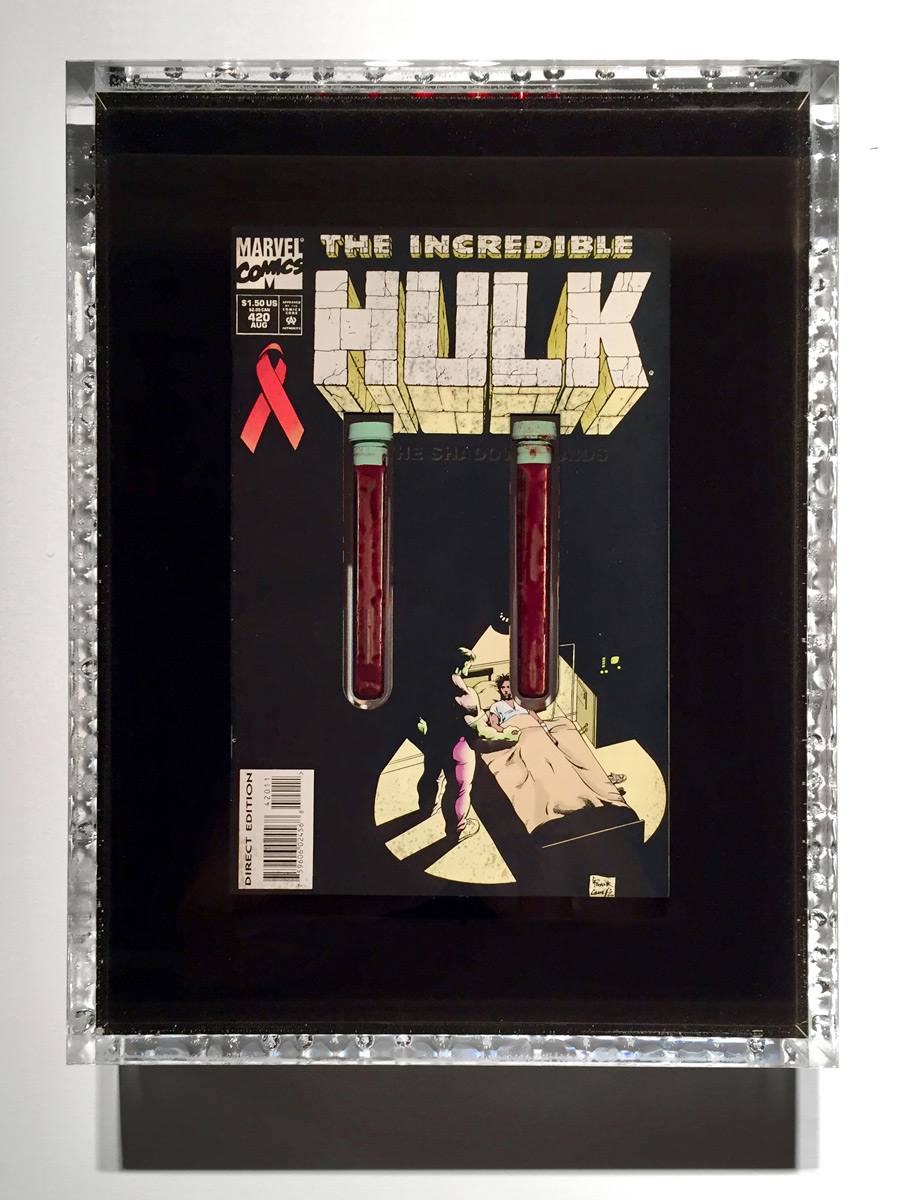 Jordan Eagles, "Untitled (HULK/AIDS)," 2018, Original Comic: The Incredible Hulk, In the Shadow of AIDS (1994)Blood collection tubes, residual blood of gay man on PrEP, residual blood of an HIV+ undetectable long-term survivor, plexiglass, UV resin. Courtesy of the artist.
Jordan Eagles, "Untitled (HULK/AIDS)," 2018, Original Comic: The Incredible Hulk, In the Shadow of AIDS (1994)Blood collection tubes, residual blood of gay man on PrEP, residual blood of an HIV+ undetectable long-term survivor, plexiglass, UV resin. Courtesy of the artist.
Learn More
Installation View
*In 1983, in an early response to the AIDS crisis, the U.S. Food and Drug Administration (FDA) implemented a lifetime ban on blood donations from gay and bisexual men. More than 30 years later, in 2015, the FDA updated its policy to allow gay and bisexual men to donate blood, but only if they are celibate for a full year. In 2020, during the COVID-19 pandemic and due to massive blood shortages, the FDA updated the policy, allowing gay and bisexual men to donate blood if they are celibate for three months. There is no celibacy requirement for heterosexuals, regardless of their risk for contracting HIV.
†Pre-exposure prophylaxis (PrEP), is a daily pill proven to be 99% effective in preventing HIV transmission (CDC)
